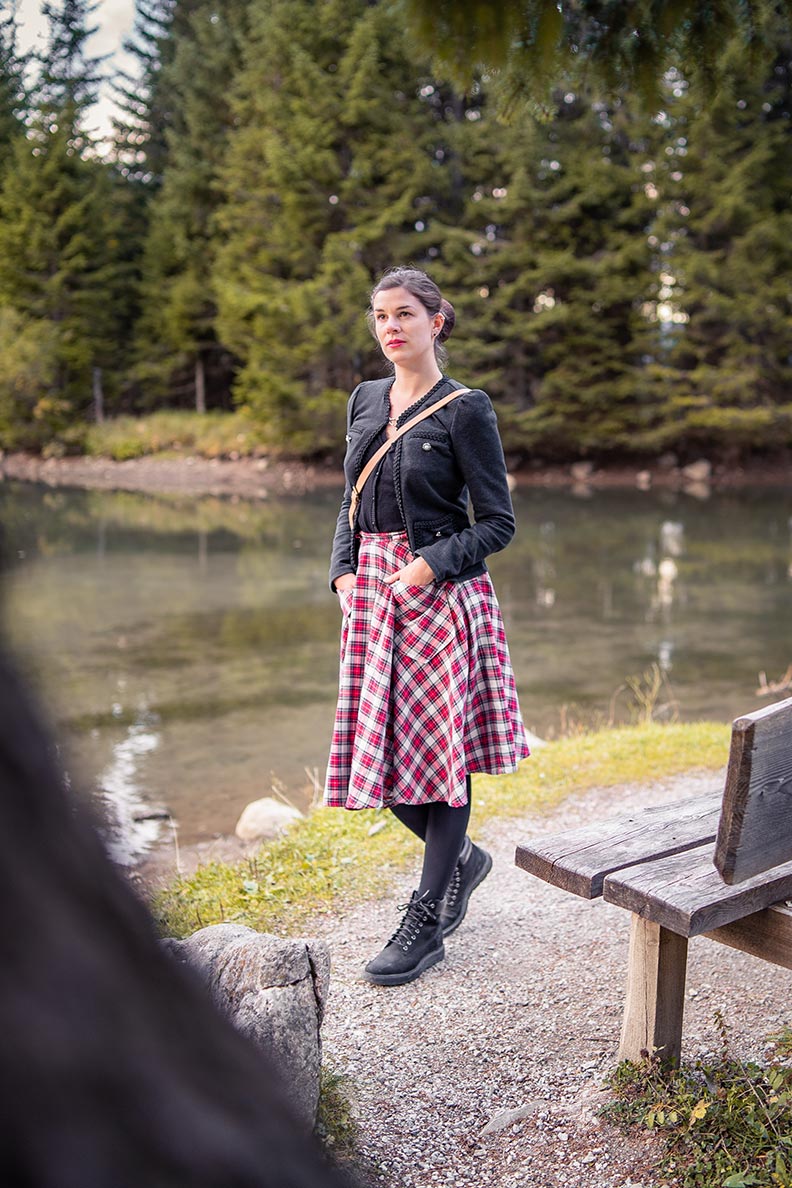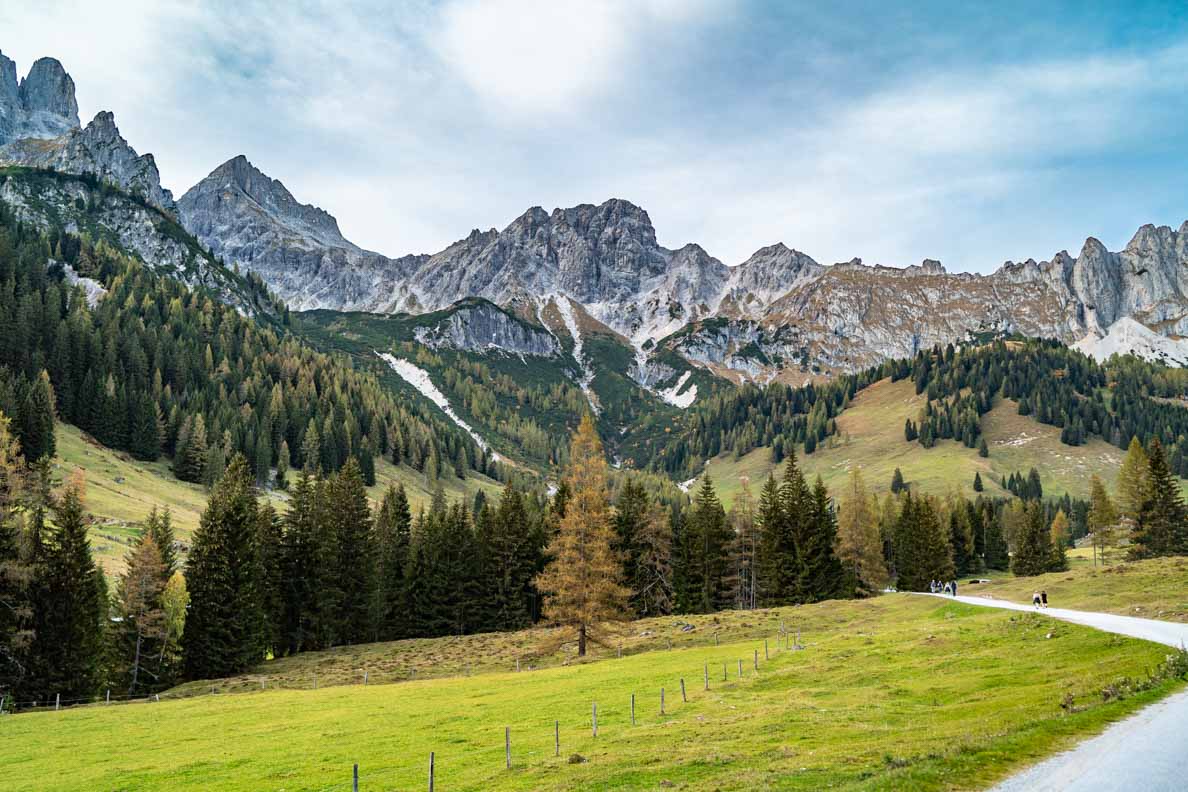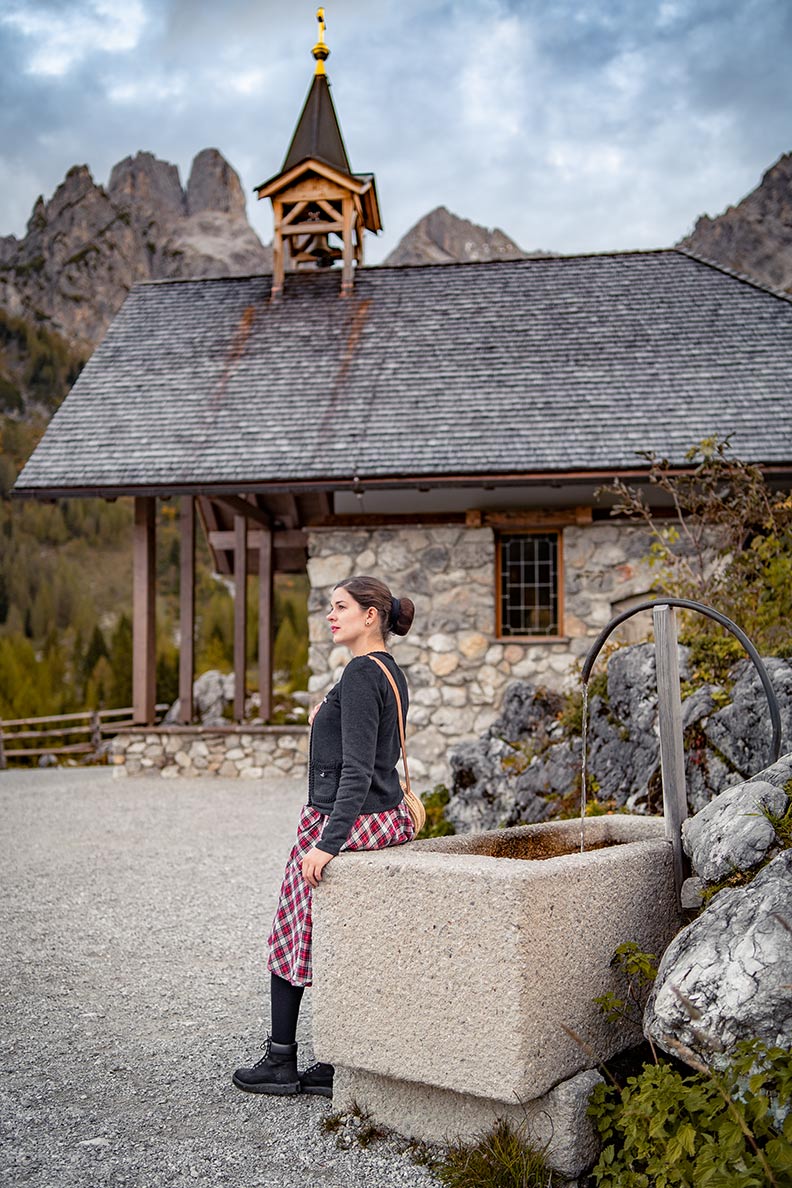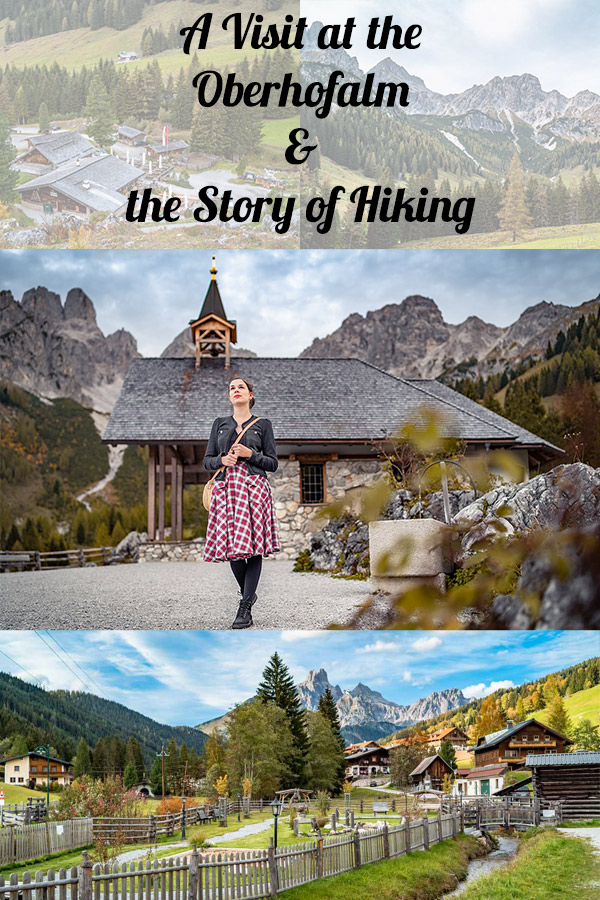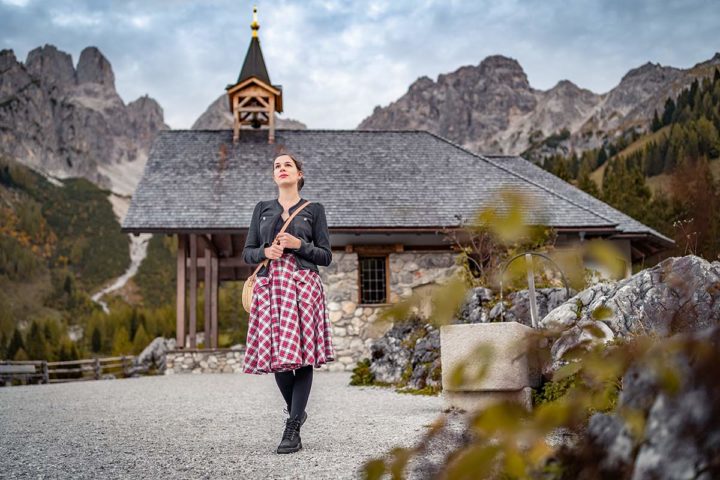
Hiking outfit & how hiking came into fashion
This blogpost contains affiliate links and pr samples
For me, the Alps are one of the most beautiful and fascinating places in the world. Grown up in the southern German alpine upland, very near to the northern alpine border, I never really appreciated the mountain view when I was younger. I am older and wiser, now, and really enjoy the alpine panorama when I look out of the window of my old child’s room. Seeing the alps also feels like coming home to me. As I told you in my blogpost about our day in Salzburg, we went to the Austrian Alps for short weekend trip. After Salzburg, we moved on to Filzmoos and spent our evening at the Oberhofalm. In this blogpost, I’m not only going to show you my vintage inspired hiking outfit, but also tell you how hiking came into fashion and some facts about the Oberhofalm.
A vintage inspired Hiking Outfit
Hiking requires a comfortable outfit. However, such a look can look classy and stylish as well, as this blogpost proves. In the photos, I’m wearing a comfy black top in combination with a tartan cotton skirt by The Seamstress of Bloomsbury, which I already showed you in this blogpost. Opaque tights protect my legs from mean insects and branches. My black jacket is inspired by a traditional German/Austrian Janker and finisches this retro hiking outfit.
Gravel paths and narrow trails require sturdy shoes. I chose black ones by Timberland. These are water-repellent, light, and offer a good grip. However, it has to be said that the way to the Oberhofalm is not very challenging. If you think about hiking on more ambitious ways, it is very important to check weather and the condition of the trails in advance and choose an adequate hiking outfit as well as shoes.
Hiking Outfit – the Details:
Top: King Louie, similar here
Jacket: Fornarina, similar here
Skirt: c/o The Seamstress of Bloomsbury
Tights: Calzedonia
Handbag: no name
Shoes: Timberland
The Story of Hiking, or: How Hiking came into Fashion
For a very long time, hiking was one of the only ways to get from A to B. This purposeful kind of hiking usually had reasons like research, job search, search for pastures, escape, or trading. Another historical reason for hiking was to make a pilgrimage.
Even though there were few people who simply hiked as a kind of hobby, like Francesco Petrarca, for example, who was the first one who climbed in 1336 the Mont Ventoux (1.900 m) together wit his brother, hiking without any essential to survive or religious reasons first really became a thing during the epoque of Enlightenment. Not at least thanks to the poem Die Alpen (engl. The Alps) (1729) by Albrecht von Hallers. Before, people saw the alps mainly as harsh nature and even were kind of scared by them. Von Hallers, however, described them as a majestic mountain world and therefore arouse the interest of adventurers.
After the epoque of Enlightenment, were the representatives mainly used hiking to describe the social and political environment of different regions, Romanesque period shaped the image of hiking until today. During this epoque, the focus while wandering was on the landscape as a kind of mirror to the inner. People were looking for peace and solitude find themselves. Results from the hiking trips were paintings and other artworks showing beautiful landscapes and places. Inspired by this, people who were wealthy enough, travelled with the help of sedans to the places showed in the artworks. This can be described as the beginning of the tourism in Germany.
Hiking as a Hobby
Hiking as a hobby, however, doesn’t really came into fashion until the middle of the 19th century, the “Golden Age of Alpinism”. Due to Industrialisation and labour laws, urban population had more time for leisure activities. It also came into fashion to spend the summer in the countryside. Activities like swimming in the lake, hiking, or climbing arose. Rambling clubs were established and pionieered new trails, shelters and so on. This was also the beginning of the first ascents, and many many people came to the alps. All in all, this can be called the first step to alpine mass tourism.
By the way: In this blogpost, I tell you what spending the summer in the countryside has to do with the Bavarian Dirndl.
So over the years, hiking changed from a necessity to a popular pasttime.
Hiking & Alpine Tourism nowadays
Nowadays, alpine tourism has gigantic dimensions. During summer and early autumn, hiking and climbing are a big thing. In winter, the alps has huge ski areas. Untouched nature has to give way to viewing platforms and lifts. Also, climate change doesn’t stop at the alps. Glaciers are melting, and permafrost soils thaw, which results in destabilisation of the soil and landslides. Furthermore, the biodiversity is declining. Of course this doesn’t mean noone is allowed to go on vacation in the alps anymore. However, a respectful interaction with nature is definitely necessary.
As I mentioned before, the right equipment is very important as well. Nowadays, many people from all over the world are visiting the alps. Improper footwear, sudden change in weather, or an overestimation of the own skills can lead to dramatic accidents. Therefore, it’s important to always check the weather and trails in advance. If in doubt, I always recommend to first try the easier ways. As my photos from the Oberhofalm show, you can have a very nice view from there as well!
Oberhofalm
Oberhofalm is a 350 years old traditional alp near Filzmoos and lies at 1,268 m altitude with a view to the Bischofsmuetze. In summer, the moutain pasture is also accessible by car, the trail passes besides the road. In winter, Oberhofalm can be reached by horse-drawn sleigh or you can walk. The food there is typical for this region and very delicious, and they also offer vegetarian meals.
If you like, you can also walk around the circular route around a little lake. At the end, the chapel called “Maria zum Steineggl” with an amazing view is waiting for you!






